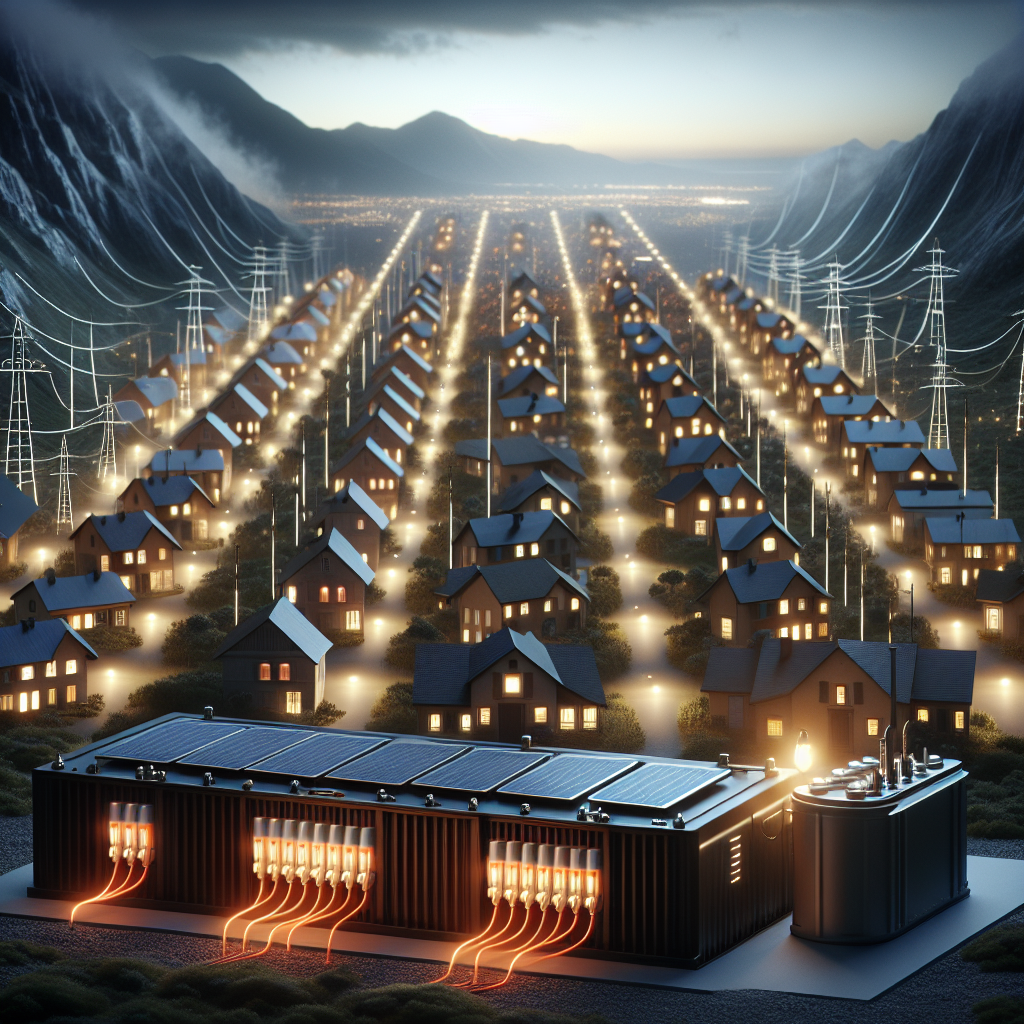How Energy Storage Can Lead to Energy Equity
In the ever-evolving landscape of global energy systems, the conversation around sustainability and efficiency has taken center stage. Amidst these discussions, the concept of energy equity has emerged as a critical pillar, ensuring that the transition to a greener future is inclusive and fair for all. At the heart of achieving this equity lies the advancement and implementation of energy storage technologies. This article delves into how energy storage can be a catalyst for energy equity, addressing disparities and empowering communities globally.
Understanding Energy Equity
Energy equity is about providing fair access to affordable, reliable, and sustainable energy services to everyone, regardless of their economic status, geography, or other societal factors. It seeks to rectify the imbalances where certain communities face higher energy costs, have limited access to renewable energy sources, or suffer more from the environmental impacts of traditional energy systems.
The Role of Energy Storage
Energy storage systems, such as batteries, thermal storage, and pumped hydro, offer a way to harness and store energy from renewable sources, making it available on demand, regardless of when it was generated. This technology is crucial for a number of reasons:
1. Balancing Supply and Demand: Energy storage can help balance the grid by storing excess energy generated during low demand periods and releasing it during peak times. This reduces reliance on peaker plants, which are often expensive and polluting, thereby lowering energy costs and improving air quality in underserved communities.
2. Increasing Access to Renewable Energy: By mitigating the intermittency issues of renewables like solar and wind, storage technologies ensure a stable and reliable energy supply. This is particularly beneficial for remote or off-grid communities, where energy storage can facilitate access to clean, renewable power without the need for expensive and extensive grid infrastructure.
3. Reducing Energy Costs: Energy storage can lead to significant reductions in energy costs for consumers. By allowing households and businesses to store excess energy generated from solar panels during the day and use it at night, the reliance on the grid is reduced, leading to lower electricity bills. This is especially impactful for low-income households, for whom energy expenses can represent a substantial portion of their budget.
4. Supporting Grid Resilience: In the face of increasing natural disasters exacerbated by climate change, energy storage can enhance grid resilience, ensuring that essential services and communities remain powered during outages. Distributed energy storage systems can be particularly effective in creating microgrids that operate independently of the main grid, providing a lifeline for vulnerable populations during emergencies.
Advancing Energy Equity Through Policy and Innovation
Achieving energy equity through energy storage requires concerted efforts from policymakers, industry stakeholders, and communities. Governments can play a pivotal role by implementing policies and incentives that promote the adoption of energy storage technologies, particularly in underserved areas. This includes subsidies, tax credits, and grants aimed at reducing the upfront cost of energy storage systems for low-income households and supporting community-owned renewable energy projects.
Innovation in energy storage technology also holds the key to making these systems more affordable, efficient, and accessible. Research and development efforts focused on improving battery performance, exploring alternative storage solutions, and integrating storage with renewable energy sources can drive down costs and expand the potential applications of energy storage.
Furthermore, community engagement and education are crucial in ensuring that the benefits of energy storage and renewable energy are equitably distributed. By involving communities in the planning and implementation of energy storage projects, it is possible to address their specific needs and challenges, empowering them to take an active role in their energy future.
FAQs
Q: What is energy storage?
A: Energy storage refers to the capture of energy produced at one time for use at a later time. It can involve a variety of technologies, including batteries, pumped hydro, and thermal storage systems.
Q: How does energy storage contribute to renewable energy use?
A: Energy storage helps overcome the intermittency of renewable energy sources like solar and wind by storing excess energy generated when conditions are favorable and releasing it when needed, ensuring a stable and reliable energy supply.
Q: Can energy storage really lower energy bills?
A: Yes, by allowing consumers to store energy during low-cost periods and use it during peak times when energy prices are higher, energy storage can lead to significant savings on electricity bills.
Q: What are the environmental benefits of energy storage?
A: Energy storage facilitates the increased use of renewable energy, reducing reliance on fossil fuels and lowering greenhouse gas emissions. It also helps improve air quality by decreasing the need for peaker plants, which typically run on natural gas or other fossil fuels.
Q: How can I contribute to energy equity?
A: Individuals can contribute to energy equity by supporting policies and initiatives that promote renewable energy and energy storage, participating in community energy projects, and adopting energy-efficient practices and technologies in their own homes.
In conclusion, energy storage stands as a transformative solution in the quest for energy equity, offering a pathway to a more sustainable, resilient, and fair energy future. By addressing the technical and economic challenges of renewable energy integration, reducing costs, and supporting grid resilience, energy storage can help bridge the energy divide, ensuring that the benefits of the energy transition are shared by all. With the right policies, innovations, and community engagement, energy storage can unlock the full potential of renewable energy, making energy equity an achievable and essential goal.

